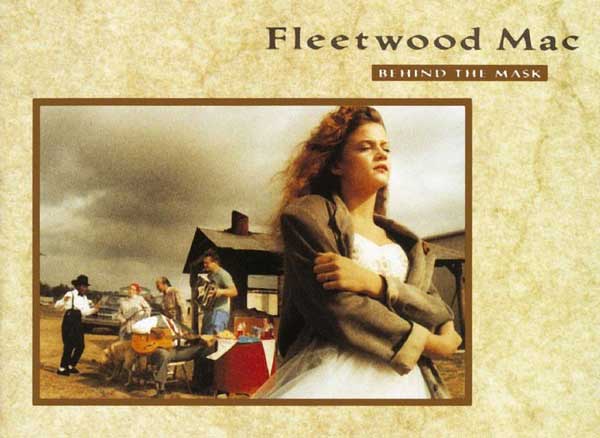Though guitarist, songwriter and producer Lindsey Buckingham’s 1987 departure from Fleetwood Mac– following the release of the phenomenally successful Tango In The Night album – was a huge blow for the band, they decided that the show must go on. After all, this was hardly uncharted territory for the group’s founder members, drummer Mick Fleetwood and bassist John McVie, who had been though line-up upheavals many times before – not least with the loss of their visionary co-founder Peter Green in 1970. Not only that, but the band risked taking a financial hit if they cancelled the planned tour, as Stevie Nicks told Classic Rock in 2013: “We couldn’t call in and say, ‘Oh, we can’t do the tour.’ We had to do it, or Fleetwood Mac would have been sued forever.”
Listen to Behind The Mask here.
Sustaining momentum
Such was Buckingham’s integral role in the group, he was actually replaced by two guitarists. Initially, the band approached Billy Burnette, a rockabilly guitarist who’d once been in Roger Miller’s touring band, had released a string of well-regarded solo albums and had collaborated with Mick Fleetwood and Christine McVie on their early 80s solo material. In an echo of Buckingham insisting that his then girlfriend, Stevie Nicks, be accepted into the group alongside him in January 1975, Burnette declined the invitation to join unless his friend Rick Vito was taken on as lead guitarist. Vito’s bluesy licks had seen him in demand as a session player, guesting on albums by Todd Rundgren, John Prine and Bonnie Raitt, among others, and he’d also made a name for himself as Bob Seger’s guitarist. Burnette and Vito joined Fleetwood Mac in September 1987, in time for the Shake The Cage tour of North America and Europe.
Following the successful tour, the new line-up entered the studio for the first time to record two new songs – Christine McVie’s As Long As You Follow and Stevie Nicks’ No Questions Asked – for 1988’s mega-selling Greatest Hits compilation. Having sustained the momentum of Tango In The Night while the new recruits settled in, sessions for what would become Behind The Mask began at the end of 1989, with Greg Ladanyi on production duties.




